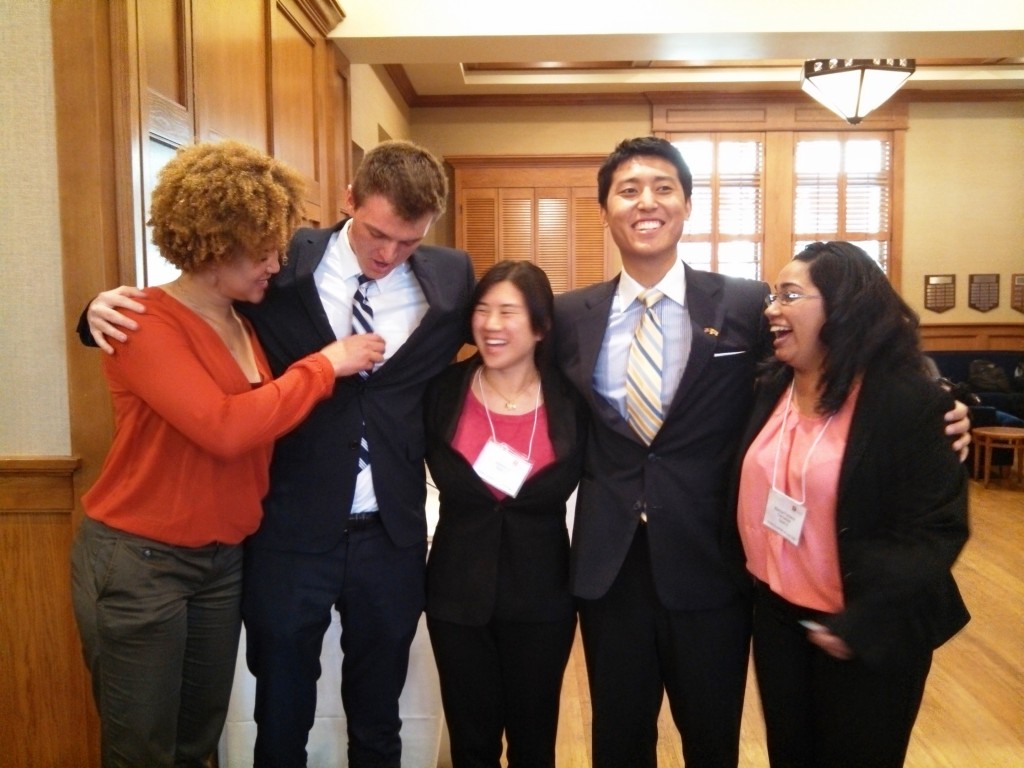In case you haven’t been here since the start of my journey, I am narrating my business trip adventures as a participant in the Fullbridge business Program. I was located in East Rock, Los Angeles for two weeks over winter break. My goal in writing these blog posts is to give Scripps students an in-depth look at what the Fullbridge Program is really all about, especially for those interested in applying for a spot in the future.
Check out my first post here.
—
Day two of The Fullbridge Program focused on group work. Within our individual teams, we worked on an exercise called “Marooned.” This activity took a twist on the traditional game, “Survivor,” and was actually designed for business programs such as Fullbridge. We got off the island just fine, and not only that, we learned about each others’ strengths and weaknesses. It was a less-than-serious way to break the ice and bond as a team. After all, we had only known each other for a day at most, by this time.
Here’s a photo of our team hard at work:
Moving on to more serious tasks, each team was also responsible for creating a PowerPoint presentation based on the Coca-Cola company. While this may sound easy, the job actually included multiple components. First, we had to work as a team. This means we had to maintain a tone of inclusiveness, and make certain compromises. Anyone (aka everyone) who’s ever worked on a group project knows how tough group projects can be. Second, we had to avoid the standard bullet points slide, which went against what most of us have been taught. Third, we had to sift through 30-40 pages of research before we could start. We had one hour.
To our surprise, we were the only team that finished by the 5 o’ clock deadline. This also meant we were first up to deliver our presentation. We did well overall, and received feedback from our coaches, as well as everyone else. Areas for improvement included more eye contact, less repetition, and the use of statistical information. Our strengths included effective graphics, clear speaking voices, and organized teamwork. Personally, this activity opened my eyes to the importance of creating a narrative—to tie all the slides together rather than regard each slide as separate from the rest.
In the scope of the big picture, day two was tiring in part because of all the computer work. And it’s different than doing work for school at Scripps because we only have those eight hours at work to finish the day’s tasks. There’s no time to procrastinate or defer the work to the next day. Later on, some of us did end up completing unfinished work back in our residence halls, but this was neither recommended nor practiced very often. This is because we were too tired by the end of the day, and knew falling behind would only make the next day harder on ourselves.
On a lighter note, my favorite part of the day was working effectively as a team. This may sound obvious, but working with other people is much more complicated than working alone. The fact that we pulled it off and also enjoyed ourselves was quite fulfilling. Back at the residence halls, we all got together to play Cards of Humanity– a silly way to end a tiring, but productive day.
Now that you’ve heard a little bit more about the Fullbridge Program, what do you think so far? Does it sound like something that would pique your interest? What would you like to hear more about? Ask away.



